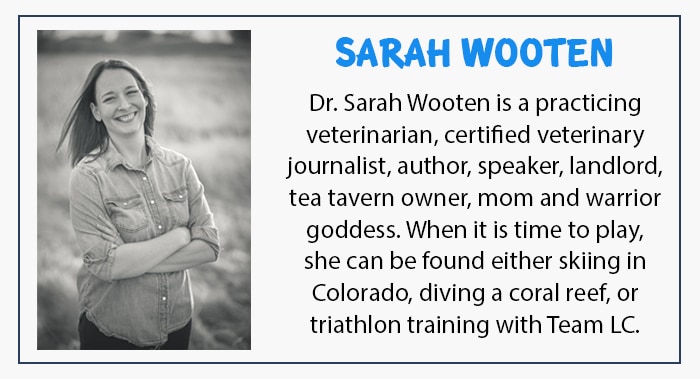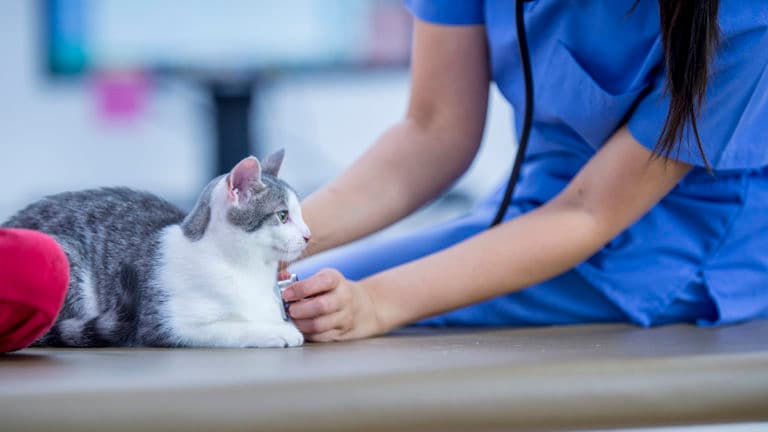If your dog has been diagnosed with dry eye, do you understand what dry eye in dogs is? Are you concerned that it might be painful and make your dog go blind? Let’s dive in to answer all your questions about dry eye in dogs.
What Is Dry Eye in Dogs?
Dry eye in dogs actually is keratoconjunctivitis sicca (KCS). Because the name is a mouthful, veterinarians call it KCS or dry eye for short, and we will, too.
Dry eye perfectly describes this ocular condition because the tear ducts either don’t make enough tears to lubricate the eye or they make poor quality tears that don’t lubricate the eye. It’s caused when something impairs the tear glands’ ability to create enough lubrication for the eye. Dry eye often is bilateral, meaning it is in both eyes.
Dry eye in dogs can be an immune-mediated condition, meaning the pup’s immune system attacks the tear glands. Other causes include viral infections, hypothyroidism and certain medications. Some breeds, such as spaniels, Pugs, some terriers, Shih Tzus, Lhasa Apsos and Bloodhounds, are at increased risk for dry eye.
Signs and Symptoms of Dry Eye in Dogs
When there are no tears to lubricate the eye, the result is a dry, red, goopy eye. Dogs who have dry eye typically have “mucusy” eyes full of “goobers.” The goobers often are thick and may be white, green or yellow in color. No matter how often you wipe them away, goobers come back.
The dry eye usually is red and looks dry and irritated. Dogs with dry eye may squint and, in severe cases, the eyelids stick to the dry eye, and it develops a leathery, blackened, cobblestone appearance.
Diagnosing Dry Eye in Dogs
In order to diagnose dry eye, your veterinarian will use a simple Schirmer’s tear test to determine your dog’s ability to make tears. The vet places a small strip of paper just inside your dog’s eyelid for one minute. If the dog produces tears, then they will wick up the strip. Your veterinarian will then use the hashmarks on the strip to measure how much lubricating fluid the tear glands are producing.
As measured by the Schirmer’s tear test, tear production is considered normal if it is 15 millimeters per minute or more. If your dog is making less than that and has red, painful eyes, then dry eye is suspected.
Is Dry Eye Painful?
Dry eye definitely is painful and makes pups miserable. The feeling is similar to when we experience eye irritation from allergies or something in our eyes. It hurts!
Can My Dog Go Blind from Dry Eye?
Yes, dry eye can make a dog go blind. When the cornea (the surface of the clear part of the eye) is irritated long enough, it begins to deposit melanin in the cornea and turn black. Vets call this corneal melanosis.
A blackened cornea does not let light or visual information in, and dogs with blackened corneas go blind. A blackened cornea is an irreversible condition.
Dry Eye Treatment for Dogs
Treatment of dry eye in dogs requires a three-part approach.
- The eye must be lubricated with eye lube, like Puralube ocular lubricant, multiple times a day.
- A medication formulated to reverse the attack on the tear glands must be applied twice a day.
- The underlying cause of dry eye is treated, if possible.
Your veterinarian may recommend additional testing if a treatable underlying cause is suspected. The most common medication prescribed to treat autoimmune-related dry eye is Optimune. It usually takes several weeks to take effect, so it is critical to keep the dry eye lubricated until the tear glands start functioning again.
Note: Ask your veterinarian about the best way to care for dry eye in dogs. A lot of eye lube is used at the beginning, but you might be able to dramatically decrease the amount once the tear glands start functioning again. In some cases, you eventually can discontinue eye lubrication altogether.
Each individual dog responds differently to treatment. Some cases don’t respond well, and those pups are referred to a board-certified veterinary ophthalmologist for further care.
To make the experience more pleasant for your dog, consider pairing medication with something positive, such feeding your dog breakfast after he gets his eye meds, getting a treat after eye meds, and so on. You also can pair medication time with playtime, if that is a better fit for your dog.
Most dogs respond well to treatment—their eye gets clear and the goobers disappear. Don’t get caught in the trap of stopping the medication when the eyes look better! Dry eye often requires lifelong management, so only stop medications if and when directed by your veterinarian. With proper care, dogs with dry eye can live great lives and have comfortable, clear eyes that are goober free.

Featured Image: via iStock.com/Steve Debenport
Share:











